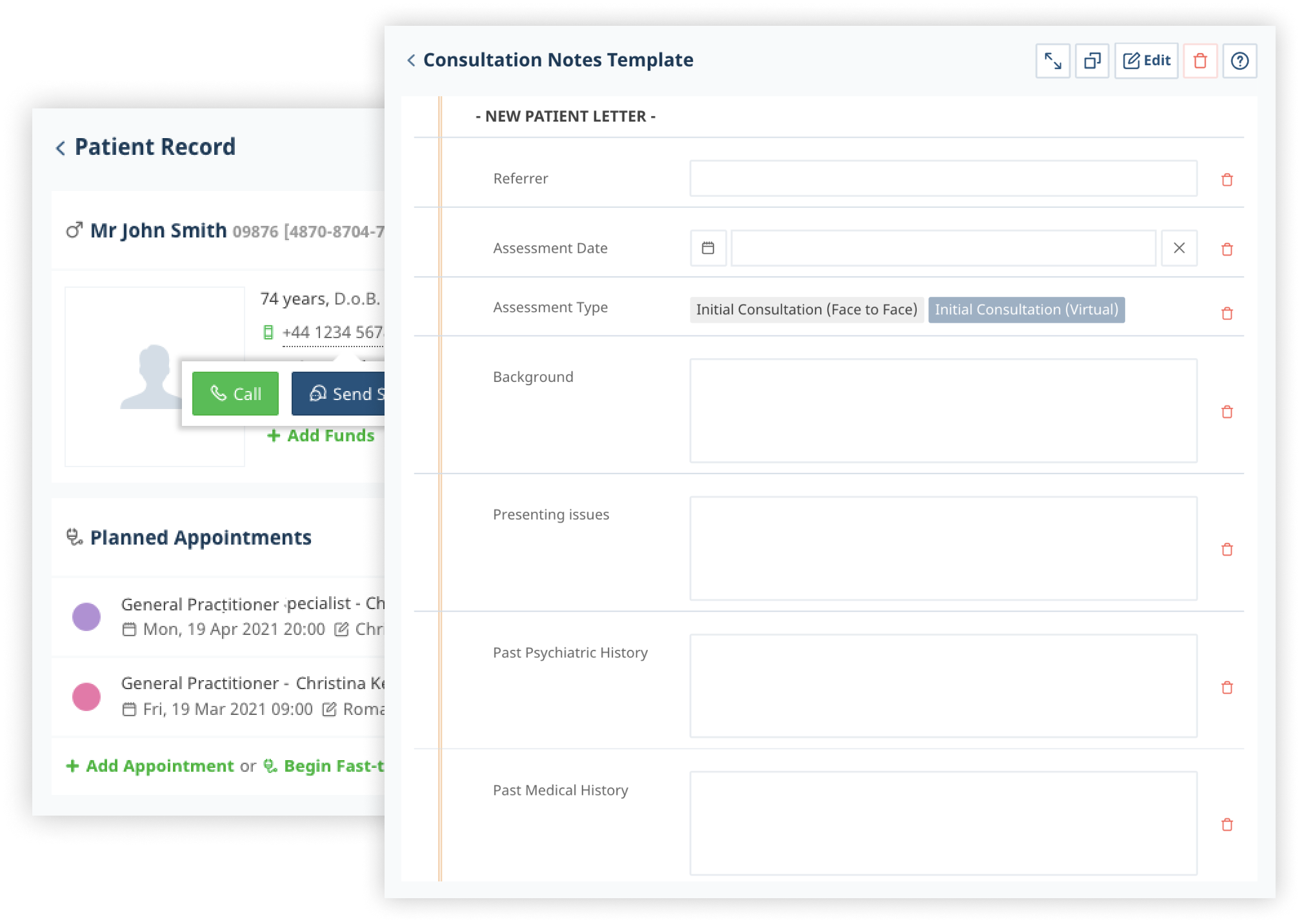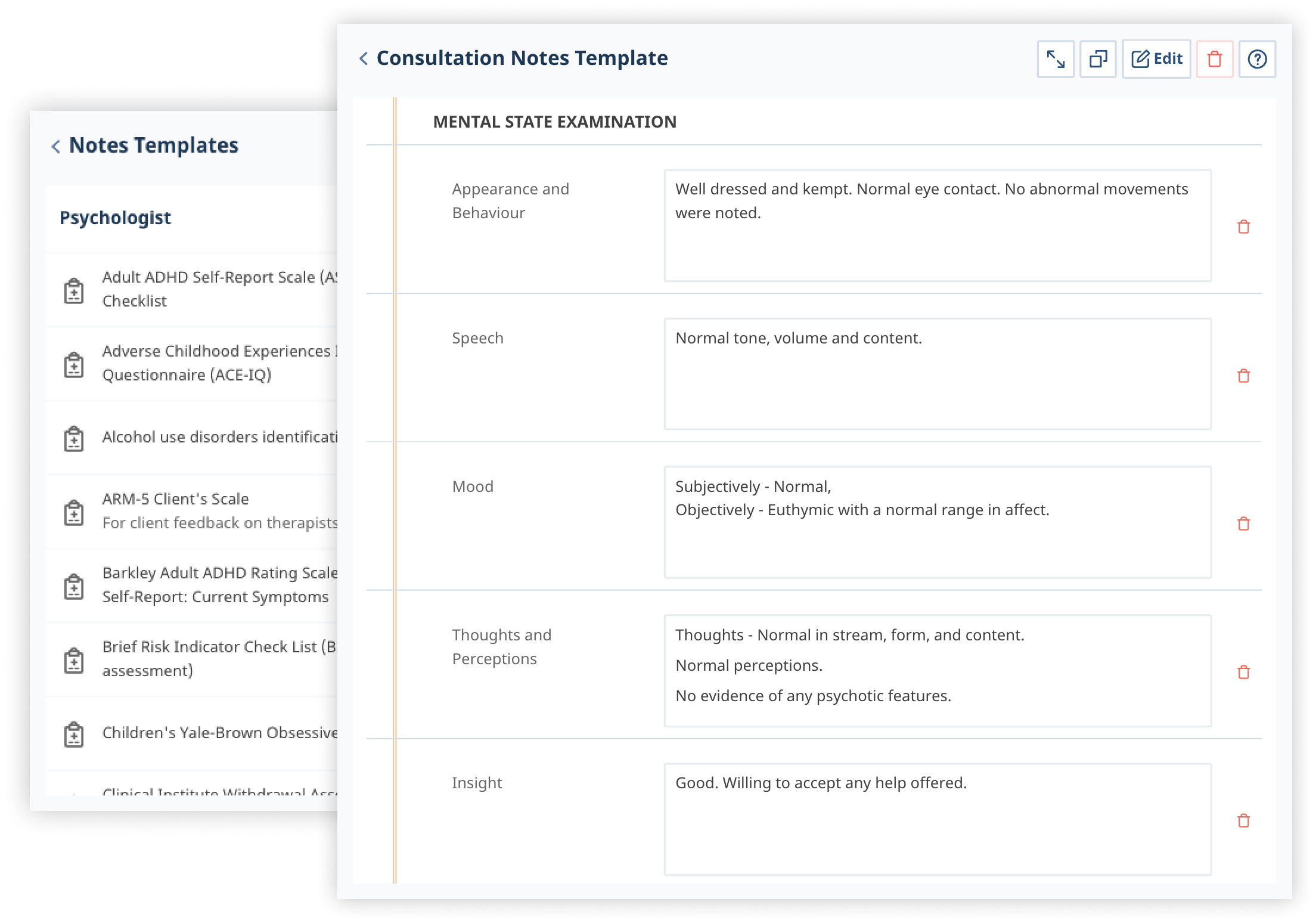Participation of mental health specialists in primary health care activities is the most significant direction of psychiatric service modernization. The determining role is played by the nature of professional interaction between general practitioners (GPs), psychiatrists, medical psychologists and social workers.
Clinical-psychological and psychiatric support is characterized by the psychiatrist delegating part of his diagnostic and management competencies to clinicians while reserving his educational and coordination functions. An invaluable element of this model is the training and continuous professional support of the activities of health professionals by a psychotherapist working in a clinic.
Psychotherapy rooms in hospitals and private practices emphasize the formation of individualized professional relationships through joint conferences and examinations, dynamic observation of patients, and the implementation of progress reports.
Learn how to simplify your practice workflow and free up more time for patients with Medesk.
Open the detailed description >>The psychiatrist shows the practitioners the possibilities of various approaches while discussing the mental health care plans in supervised patients. However, he also gradually delegates some functions to the district doctor for the protection of mental health.
Needless to say, the cooperation of these specialists is a must in a proper treatment. The most widespread way of collecting and discussing patient’s anamnesis and making a joint treatment plan is writing a referral letter, or letter of recommendation.
In this article you’ll learn about:
- Difficulties in the interaction of a GP and a psychiatrist
- The core elements of a referral letter
- The benefits of EHR in compiling referral letters.
Difficulties in the Interaction of a GP and a Psychiatrist
When we discuss different approaches to medicare, we see two sides of the same coin.
Clinicians believe that releasing or increasing anxiety during psychotherapy will lead to undermining the positive effect of drug treatment.
In cases of stimulant use patients may experience extreme aggression, which requires immediate psychiatric intervention and careful coordination with a GP to ensure a comprehensive treatment approach.
Medical psychologists see the problem in another way: the reduction of anxiety, quickly achieved through psychotropic therapy, leads to the avoidance of personal activity in general and the active role of the patient in the process of psychological correction and psychiatry in particular.
The above-mentioned concerns are very common and have been the subject of many discussions discussions (NHS England, for example). The task of both groups of specialists is to reduce the issues to a minimum.
So, we consider that the only way to provide the best mental health services is to come to a compromise in the treatment of patients. Writing referral letters is the first step.
Let’s discuss the core elements of a sample letter.
Medesk helps automate scheduling and record-keeping, allowing you to recreate an individual approach to each patient, providing them with maximum attention.
Learn more >>The Core Elements of a Referral Letter
The templates and structure of letters vary from center to center, but here we have compiled the obligatory elements you must include no matter what.
#1. Information about the patient
First you need details about a referrer (you) and your client. Identification information includes the date of birth (DOB), age, sex, marital status, and occupation. You may also write down the date and type of visit, your initial assessments and the reason for writing the letter.
#2. The main complaint
The next step is to state a current problem. As a psychiatrist, you may include such diagnoses as psychosis, eating disorder, anxiety, or even a personality disorder. It is also appropriate to note how the main complaint affects the life and behaviour of a patient.
#3. Anamnesis of the disease
This is without a doubt one of the most important paragraphs. A referring GP should have a detailed picture of the problem's history. Your colleague will benefit from past psychiatric history with influencing events, past drug history, past diagnoses, and medical problems.
#4. Client’s personal history
There is no need to repeat the anamnesis here. However, you may add some relevant facts about a client’s personality, meaning sexual orientation, current employment status, character, traumatic experience of communicating with people and so on. Several of these facts may alter a subsequent treatment.
#5. Mental state examination and evaluation
This part of a letter contains your subjective evaluations of a patient’s speech, behaviour, thoughts and cognitive functions. Formulation and appearance are other things to mention.
For instance, as a dietician you can also screen for suicidal thoughts, because they often accompany eating disorders and depression.
#6. Drug or medical history
Allergies, chronic conditions, drug use, previous prescriptions for medication, and current test results should be mentioned. Also, whether a person used to have any side effects while on medication. In general, you need to state everything you consider significant about a patient’s health condition.
#7. Preliminary diagnosis and planning
Preliminary diagnosis is important, even if you are not completely sure about it. Provide your predictions and treatment suggestions for a referring caregiver. According to your letter, a GP will make his own diagnostic assessment.
Thus, by combining efforts and observations, you will achieve the most efficient treatment results.
The Benefits of EHR in Compiling Referral Letters
Implementing electronic health records (EHR) facilitates your communication with the colleagues. By using electronic software, you are able to exchange referral letters without interrupting your normal workflow. Moreover, you can increase the time of face-to-face appointments by reducing manual paperwork.
Discover more about the essential features of Medesk and claim your free access today!
Explore now >>Medical correspondence between a psychiatrist and a GP, as well as recording a client's progress, differs greatly from other specialists’ paperwork. Psychiatrist's assessment is partly subjective, so the EHR’s built-in templates and questionnaires help to more objectively evaluate a patient's condition and, accordingly, compose an accurate letter for a referring GP.

With the Medesk “New Patient Letter“ template all the necessary paragraphs and sections are pre-made. You only need to fill in the information about the client and send it to the practitioner.
The letter is divided into several sections for your convenience:
- General information
- Drug history
- Mental state examination
- And CC
You also have an option to choose an ICD-10 code to make a preliminary diagnosis, and fill out a section for planning and other information.

As you can see, referral letters are a well-established way of achieving consensus between professionals from different medical fields. Don't forget to use it!


